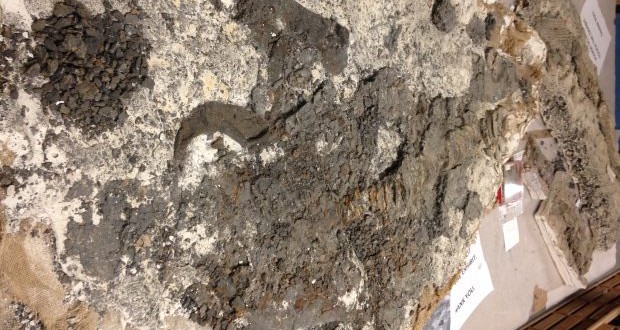The fossilized remains of a crow shark that is believed to be 80 to 90 million years old has the experts talking at a Manitoba fossil museum, 39 years after it was unearthed at a mine site.
The Canadian Fossil Discovery Centre in Morden, Man., had the Squalicorax remains in its collection room since 1975, but it wasn’t until this year that staff studied the specimen and realized its significance
“This shark was really re-discovered since it has been in a field jacket in our collection room since 1975,” said curator Matt Duda. “Limited resources mean it can take a while to get to some things but once we took a closer look we realized we had something of great significance.”
Photos of the specimen were sent to palaeontologist Michael Newbrey, a fish expert at Columbus State University in Georgia and former scientist with the Royal Tyrrell Museum in Alberta.
Newbrey plans to come to Manitoba to study the find.
“At just over an estimated three metres in length the CDFC Squalicorax is the largest-known partially articulated specimen for the genus in the world, being 1.2 times the size of the largest known specimen ofSqualicorax,” said Newbrey. “It is one of the most complete specimens of Squalicorax next to a two-metre long specimen at the Smithsonian.”
Sharks first started swimming in North America’s oceans at least 400 million years ago; the modern shark developed some 200 million years ago.
Like modern sharks, they had no bone, only cartilage in their skeletons; usually, only teeth are found fossilized.
The Squalicorax ate sea creatures like turtles and mosasaurs — the Canadian Fossil Discovery Centre’s second most recent discovery. Bruce, as the mosasaur is known, is the largest on display in the world at 13 metres (43 feet).
After the mosasaurs died out, giant sharks — the predecessors of today’s Great Whites — ruled the Western Interior Seaway, a deep channel that split North America in two from the Arctic Ocean to the Gulf of Mexico.
Now, the centre needs to raise funds to be able to properly prepare the fossil for research and exhibition.
“I think it will rank as one of top three, displayed, articulated fossil sharks (of any kind) from the Cretaceous period of North America,” said Newbrey. “The CDFC Squalicorax is the only partially articulated specimen of the genus from Canada and is also the most complete of any partially articulated shark from Canada.”
The unveiling of the fossil will kick off the centre’s Shark Week festivities Aug. 11 at 1 p.m.
Agencies/Canadajournal

 Canada Journal – News of the World Articles and videos to bring you the biggest Canadian news stories from across the country every day
Canada Journal – News of the World Articles and videos to bring you the biggest Canadian news stories from across the country every day

